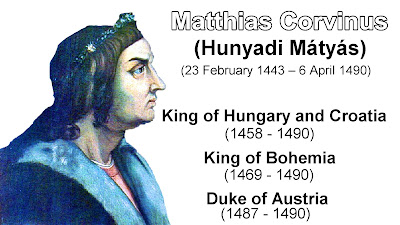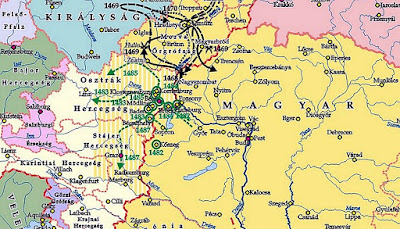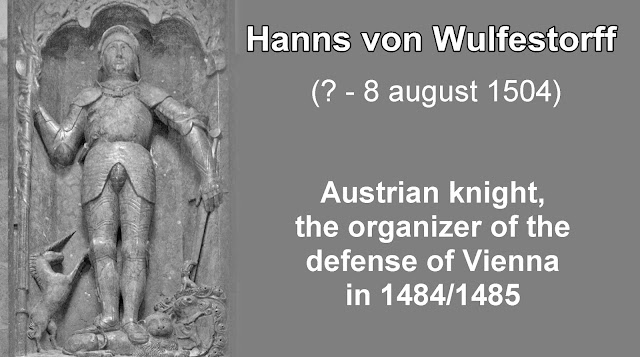The siege and the fall of Vienna took place during the Austrian–Hungarian War in 1485. The Austrian–Hungarian War was a military conflict between the Kingdom of Hungary under Mathias Corvinus and the Habsburg Archduchy of Austria under Frederick
V, also known as Holy Roman Emperor, Frederick the III. The war lasted from 1477 to 1488 and resulted in significant gains for Matthias, which humiliated Frederick, but which were reversed upon Matthias' sudden death in 1490.
In the year 1483–84 Vienna was already being cut off from the Holy Roman Empire due to the fact that its concentric defensive
strongholds, including Korneuburg, Bruck, Hainburg, and later Kaiserebersdorf, had all fallen. One of the most important engagements was the Battle of Leitzersdorf, which made the next year's siege possible. The city was ravaged by famine, although the Emperor Frederick III did succeed in sending in some vital supplies with a breakthrough to the city by sixteen vessels on the Danube.
On 15 January, Matthias called on the city to surrender, but Captain von Wulfestorff refused to do so, in the hope that an Imperial relief force would arrive in time. The blockade was fully in place as soon as Matthias attacked Kaiserebersdorf, where he became the target of an assassination attempt when a cannonball nearly killed him. After Kaiserebersdorf was captured in mid-1485 the fate of Vienna was sealed.
Matthias stationed his armies at the Hundsmühle flour mills and in Gumpendorf on the south side of the Vienna River. The King had previously brought in seventeen siege guns to Austria and with it he ordered the constant firing of barrage into the city. At the same time, he also ordered the construction of two siege towers, one of which was later burnt by the resisting Viennese militia. Matthias made his incursion into Leopoldstadt on 15 May, which made the final assault imminent. The Viennese people realized this and negotiated to surrender the inner city to the Hungarian King. Their only condition was that their citizens' privileges be preserved, along with a guarantee of safe passage. On 1 June, at the head of a column of his soldiers, Matthias entered the heart of Vienna behind its city walls in triumph.
The fall of Vienna meant its merging to Hungary from 1485 to 1490. Matthias Corvinus also moved his royal court to the newly occupied city. At the end of the Matthias' campaign Hungary controlled all of Upper Austria as well and remained under his control to his death in 1490.







